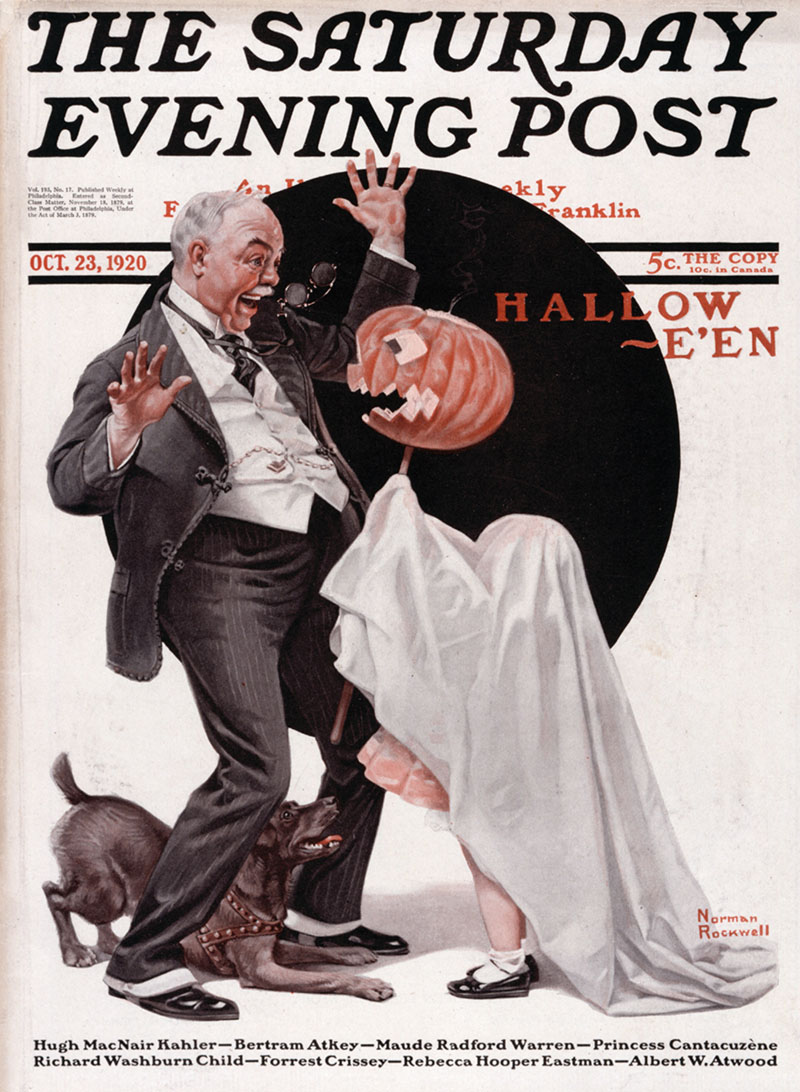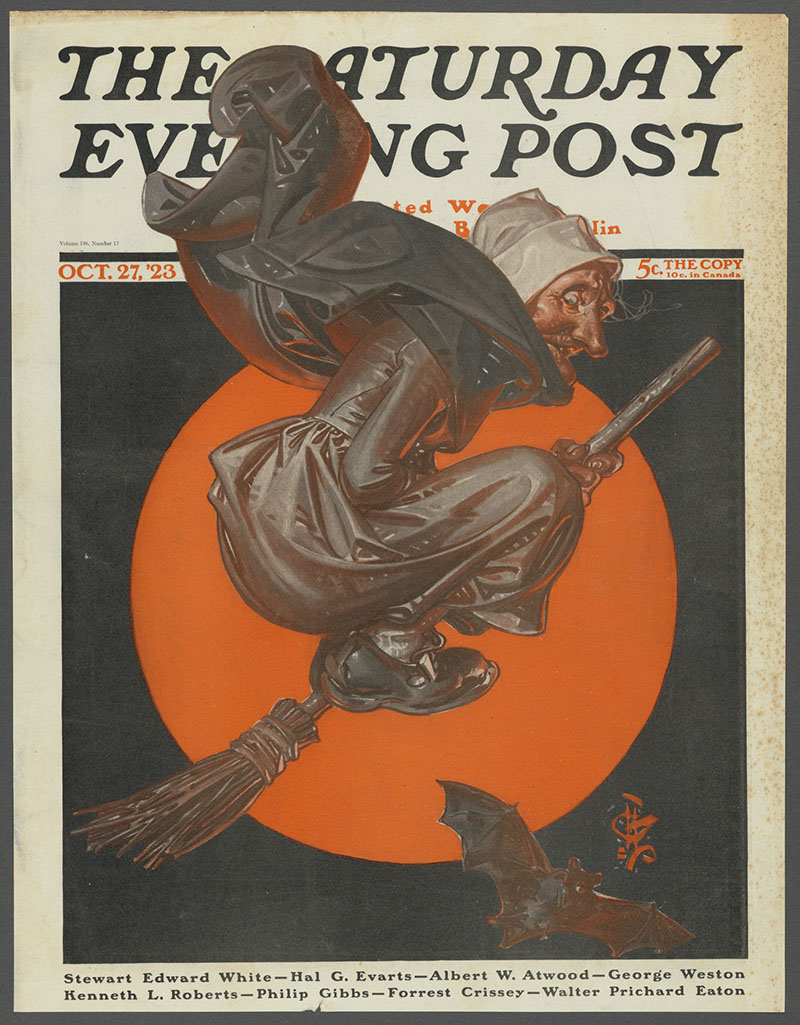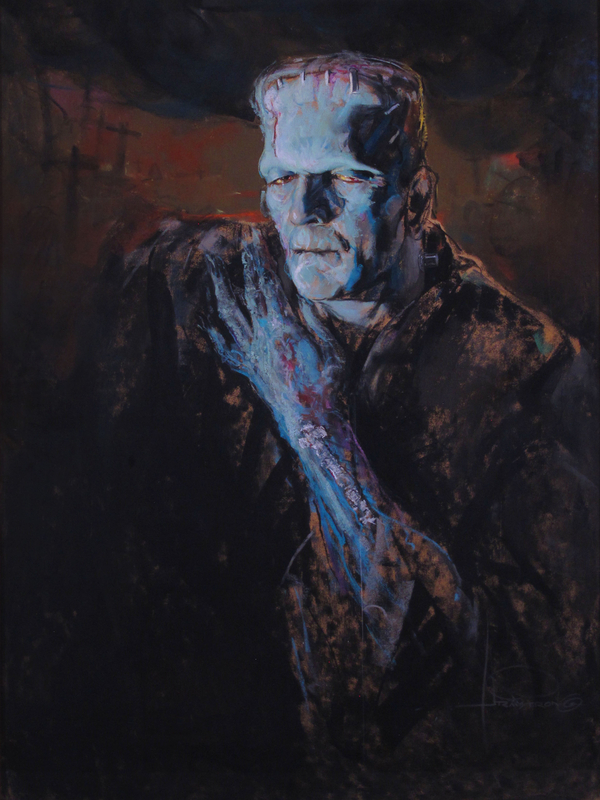Collections Hunters:
Uncovering the Museum’s Art and Archival Collections
Jack O’Lanterns – The Hallmark of Halloween
October 28, 2020 – Written By: Venus Van Ness
In addition to scary witches and ghosts, glowing pumpkins with carved faces are a quintessential sign of the Halloween season. People have been making jack o’lanterns at Halloween for centuries, but where did the idea come from? One theory as to their origin looks to Ireland and an 18th century folktale about a man named “Stingy Jack.”
According to the story, Stingy Jack invited the Devil to have a drink with him. True to his name, Stingy Jack refused to pay for his drink, and convinced the Devil to turn himself into a coin that Jack could use to buy their drinks. Once the Devil did so, Jack decided to keep the money and put it into his pocket next to a silver cross, which prevented the Devil from changing back into his original form.
The next year, Jack again tricked the Devil into climbing into a tree to pick a piece of fruit. While he was up in the tree, Jack carved a sign of the cross into the tree’s bark so that the Devil could not come down until the Devil promised Jack not to bother him for ten more years.
Jack died soon after, and God refused to allow such an unsavory figure into heaven. The Devil, upset by the tricks Jack had played on him, would not allow Jack into hell. He sent Jack off into the dark night with only a burning coal to light his way. Jack put the coal into a carved-out turnip and has been roaming the Earth with it ever since. The Irish began to refer to this ghostly figure as “Jack of the Lantern,” and then, simply “Jack O’Lantern.”
In Ireland, people began to make their own versions of Jack’s lanterns by carving scary faces into turnips or potatoes and placing them into windows or near doors to frighten away Stingy Jack and other wandering evil spirits. Irish Immigrants brought the jack o’lantern tradition with them when they came to the United States. They soon found that pumpkins, native to the region, made perfect jack o’lanterns.
But how did jack o’lanterns become associated with Halloween? Halloween is thought to be based on the pagan Celtic festival Samhain, a celebration in ancient Britain and Ireland that marked the end of summer and the beginning of the new year on November 1st. It was believed that during Samhain the souls of those who had died that year traveled to the otherworld and that other souls would return to visit their homes. A similar festival was carried on by Christians during the feast of All Hallows’ Eve—observed on October 31st, the evening before All Saints’ (or All Hallows’) Day. In both cases, the jack o’lanterns served a similar purpose – to frighten away evil or unwanted spirits that could cause mischief or harm.
To find out more about Norman Rockwell and J.C. Leyendecker, visit their profiles on the Museum’s Illustration History website (IllustrationHistory.org).
Virtual Exhibit: Fiends
Written By: Barbara Rundback
Last year, when cataloging the Julian Allen collection, I came across a painting that was perfect for an exhibition relating to Halloween. When chief curator Stephanie Plunkett asked me to write a blog about spooky holiday illustrations, I used the opportunity to curate an on-line exhibit exploring the theme.
Fiends
Halloween is rooted in an ancient Celtic festival marking the end of the year. On this night, it was believed that the boundary between the worlds of the living and the dead were blurred. As a way to Christianity spread, the Roman Catholic Church created All Saint’s Day to coincide with this event, and the night before called All Hallows’ Eve. Over the years, this holiday and other traditions from different cultures have influenced America’s favorite Halloween activities. The Norman Rockwell Museum Collection has a selection of frightful images that exemplify the occasion. Enjoy the haunting imagery.
To find out more about Rolf Armstrong, Julian Allen, Bascove, Joseph Clement Coll, William Steig, and Norman Rockwell, visit their profiles on the Museum’s Illustration History website (IllustrationHistory.org).













